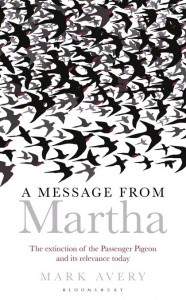 There were two stories that the late Gerald Durrell told me about animals being driven to extinction. They both occurred in America during the early nineteenth century. The first was set in the Great Plains where huge herds of Buffalo roamed. When the first railroads were established it gave hunters easy access to the buffalo. Buffalo hide was a valuable commodity and the herds were quickly wiped out.
There were two stories that the late Gerald Durrell told me about animals being driven to extinction. They both occurred in America during the early nineteenth century. The first was set in the Great Plains where huge herds of Buffalo roamed. When the first railroads were established it gave hunters easy access to the buffalo. Buffalo hide was a valuable commodity and the herds were quickly wiped out.
The grassy, sandy soil of the plains was also home to the Prairie dog which lived underground in burrows. Living with them were Burrowing owls and Rattlesnakes. Any abandoned burrows were occupied by the Black-footed ferret which preyed on the Prairie dogs. The Buffalo with their wide, low loading hooves did no damage to the grassy, sandy soil of the plains. The cattle brought in by the settlers with their sharp, narrow hooves played havoc with the soil and destroyed the Prairie dogs burrows. The Prairie dogs survived but the Black-footed ferret hovered on the brink of extinction. Prompt action by a group of conservationists who caught some of the remaining animals and bred them in captivity enabled them to be returned to wild where they have thrived.
Gerry’s second story had no happy ending. It is the story of the extinction of what must have been the world’s most numerous bird, the Passenger Pigeon. Mark Avery has chronicled in meticulous detail the fate of this beautiful bird in his book A Message from Martha. A hundred years ago on 1st September 1914 the last remaining Passenger Pigeon, Martha, who had lived in a cage all her life, died in Cinccinati zoo. She was 29 years old.
Mark covers the biology of the bird. Its preferred foods were beech mast, acorns or chestnuts. He has unearthed staggering eye-witness accounts. Here the celebrated bird artist John James Audubon describes the birds arriving at their roost: The pigeons, arriving by thousands, alighted everywhere, one above another, until solid masses as large as hogsheads were formed on all the branches around. Here and there the perches gave way under the weight with a crash, and, falling to the ground destroyed hundreds of the birds beneath, forcing down the dense groups with which every stick was loaded. It was a scene of uproar and confusion. Using several eye-witness accounts Mark works out the size of the flocks that darkened the sky for days at a time. His best estimate for its total population was 7.5 billion birds.
The Passenger Pigeon’s demise follows the all too familiar story of the Great Plains Buffalo. Deforestation destroyed their roosting and nesting places concentrating them within certain areas. Settlers at Petoskey, plundered them during the breeding season sending their bodies back by rail to satisfy the city dwellers lust for fresh meat.
It’s a sad story, vividly portrayed. Mark has detailed the breeding biology of the bird, its vast population, the destruction of its habitat and through Man’s greed and mindless slaughter how the Passenger Pigeon was hurried into extinction. A Message for Martha is one of the most important books on the natural world published in 2014.
